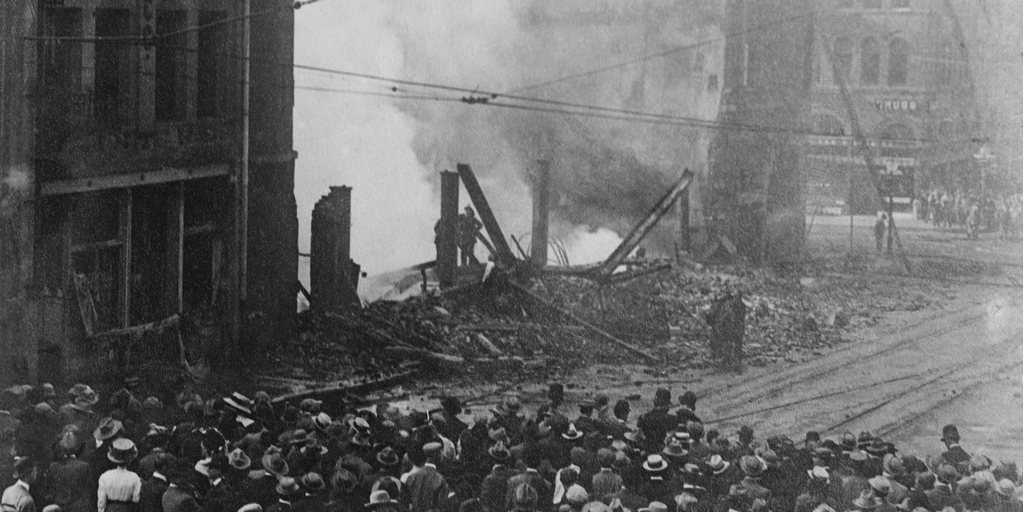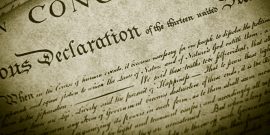It is a commonplace that American manufacturing is in decline. But is this true, and if it is, what are the appropriate remedies?
The Myth of Labor Union Victimhood
In a prior essay I endeavored to dispel the widely held myth of “government by injunction”—the notion that state and federal courts routinely (and improperly) favored employers in labor disputes. The actual facts strongly suggest otherwise. As written by progressive academics, the history of labor unions in America is as full of fiction as Aesop’s Fables or the Brothers Grimm’s fairy tales. Another labor law myth is that brutal employers, often with the assistance of private militias in the form of Pinkertons or other detective agencies, commonly suppressed peaceful concerted action by employees through unprovoked violence.
While it is true that many labor conflicts were violent—especially during the tumultuous late 1800s and early 1900s, at the peak of the so-called Gilded Age—labor unions were responsible for most of the violence. Violent conflict was most common when replacement workers (or “scabs”) tried to cross union picket lines—as they had a legal right to. The very term “scab” expresses the extraordinary contempt that union sympathizers had for workers who did not share their collective goals—that is, who were willing to work on terms that the union refused. The vilification of “scabs,” including the incitement of violence against them, is an essential element of unionist lore.
Much is said about employers hiring private security forces (such as Pinkertons) to provide security, which they sometimes did in the absence of adequate local police forces to protect their property during labor disputes in an era of lean government, but one must not overlook the militant leadership of many labor unions in the Gilded Age, which included a radical faction of socialists, communists, and anarchists who sought to overthrow the capitalistic system. Unionists, many of whom embraced the Marxist belief that private ownership of businesses was illegitimate, were willing to—and often did—resort to extreme measures. Bombings were not uncommon.
Let’s take a quick look at one of the most notorious labor conflicts, the May 4, 1886 riot in Chicago’s Haymarket Square, in which eight people (including seven Chicago police officers) were killed when someone threw a bomb into a crowd of policemen who were breaking up a protest rally. Conventional wisdom holds that xenophobia and anti-union hysteria led to a hasty investigation and an unfair trial, resulting in the unwarranted conviction of eight foreign-born anarchists, four of whom were hanged. According to the overwhelming consensus of historians sympathetic to the labor movement, the Haymarket trial was a travesty of justice. This pro-union sentiment has hardened into something approaching religious dogma, which proponents tirelessly proselytize with evangelical fervor.
The prevailing narrative is deeply entrenched. In 1893, Illinois Governor John Peter Altgeld, a Progressive activist who later practiced law with Clarence Darrow, pardoned the three surviving Haymarket bombing convicts. In 1972, the city of Chicago removed a statue of a policeman from Haymarket Square, where it had stood for over 80 years as a monument to the fallen officers. In 1998, the National Park Service declared the convicted anarchists’ gravesites and the “Haymarket Martyrs’ Monument” to be a National Historic Landmark. In 2004, Mayor Richard Daley dedicated a state-funded sculpture in Haymarket Square—in the image of the wagon from which the agitators were speaking prior to the bombing—as a memorial to the 1886 bombing. The unmistakable symbolism is that the anarchists were innocent, the victims of capitalist oppression.
The historical record, if reviewed objectively, tells quite a different story. Timothy Messer-Kruse’s scrupulously balanced account, The Trial of the Haymarket Anarchists (2011) offers an alternative version, based on a review of the actual trial transcript, which was previously unexamined by historians. His assessment: The investigation was thorough, the lengthy trial was fair, the evidence was overwhelming, the jury verdict was sound, and the appeals were properly denied. Messer-Kruse’s book, subtitled Terrorism and Justice in the Gilded Age, has not received the scholarly attention it deserves because it runs counter to the pro-union mythology that union leaders and labor historians have worked hard to create.
To the contrary, leftist historians attacked Messer-Kruse for challenging their sacred narrative of union martyrdom. Hillsdale College journalism professor John Miller, writing in National Review, recounted the controversy in a 2013 article entitled “What Happened at Haymarket?” As Miller summarizes, Messer-Kruse
shows that Chicago’s anarchists belonged to an international network of left-wing militants who believed that only bloodshed could bring social change. They plotted to incite violence at Haymarket. The person who threw the bomb was almost certainly Rudolph Schnaubelt, a close confederate of the defendants. He was never brought to justice because he fled Chicago and vanished from history, though Messer-Kruse suggests that he lived out his days as a farm-equipment salesman in Buenos Aires. The eight men who were arrested received a fair trial by the standards of the day. Finally, most of the blame for their being found guilty lies with a defense team that seemed more committed to political theater than to providing competent legal counsel.
The Haymarket Square bombing was not an aberration. The history of labor unions in America brims with many radical outfits that advocated and engaged in extreme violence, including the Industrial Workers of the World (“Wobblies”), the Iron Workers Union (responsible for bombing the Los Angeles Times building in 1910), the Western Federation of Miners (charged with assassinating former Idaho Governor Frank Steunenberg in 1905), and the United Mine Workers of America, which led an armed insurrection in West Virginia in 1920-1921 resulting in up to 100 deaths before being suppressed by federal troops. The Pullman Strike (and boycott) in 1894 was a violent affair led by socialist Eugene Debs, then-president of the American Railway Union, who was imprisoned for defying court orders. And there are many others. I don’t wish to suggest that employers were always blameless, or that peaceful picketers were never the victims of violence, only that both sides bear responsibility.
Unions have never hesitated to resort to force, or physically to interfere with the employers’ business operations, often in violation of the law. The American labor movement was founded in lawlessness. The UAW obtained General Motors’ recognition in Flint, Michigan by staging an illegal sit-down strike in 1936-1937, and defying federal court orders that they vacate GM’s premises. Historian Howard Dickman explains the genesis of the mythology of labor union victimhood: “[W]hat is really at stake in blaming the violence on employers or the government…is simply the belief that a union, on the basis of their members’ presumed property right to their jobs, had a right to shut down a plant or industry or even an entire economy.”
Employees do not own their jobs, and working conditions—no matter how horrendous—do not justify the use of violence to prevent a worker from crossing a picket line. By today’s standards, it is undeniable that many coal mines, sweatshops, and factories in the Gilded Age were awful places to work: harsh, low paying, and sometimes unsafe. Conditions were often grim, and got worse during periodic recessions. Yet, the immigrants who were working in mines, employed in sweatshops, or living in urban squalor were typically escaping even worse living conditions in their country of origin. They came to America in unprecedented numbers to escape famine and misery. The working conditions they encountered in America—however unpleasant—were an improvement. That is why so many immigrants came here, and continued coming.
Presentism does not excuse union aggression. Nor does the presumed “success” of organized labor justify the mythology that sympathetic historians and legal scholars have spun to deify unions. Working conditions in America improved primarily as a result of market forces and Progressive Era state regulation, not through collective bargaining or strikes. Labor unions were not “victims,” and it is either delusional or mendacious to contend otherwise.



